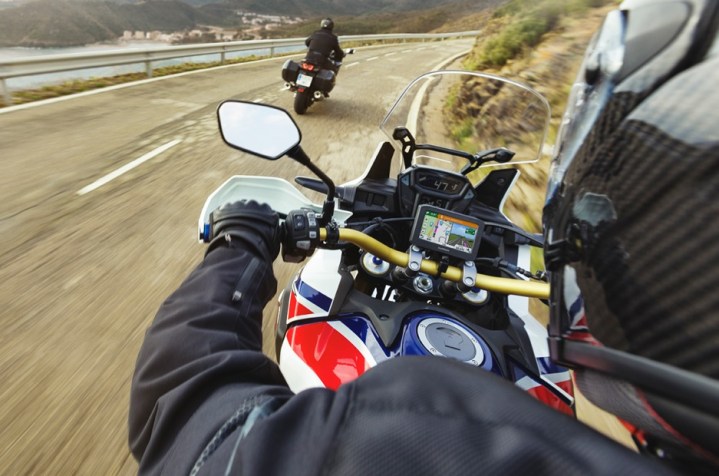
Garmin is taking motorcycle navigation technology a step further by incorporating more connectivity features and live alerts into its Zumo line of products. It developed the all-new Zumo 396 LMT-S specifically for adventurous riders who want to keep their phone in their jacket pocket as they hit the open road.
The newest, smartest member of the Zumo family boasts a 4.3-inch touch-sensitive display designed so riders can navigate the various menus even while wearing gloves. If you drive a car, your GPS usually sits on the windshield or in the glove box; that’s a relatively easy life. On a motorcycle, the device regularly gets exposed to the elements. To that end, Garmin promises fuel vapors, UV rays, and even harsh weather won’t damage the 396 LMT-S.
At its core, the 396 LMT-S functions like all GPS systems do. It provides turn-by-turn navigation to help riders find the fastest, safest, or most efficient way to travel from point A to point B. It has a few more tricks up its sleeve, though. Owners can pair their Bluetooth-enabled device to the 396 LMT-S using the Garmin Smartphone Link application, which gives them access to a range of free live services including real-time weather and traffic information. It’s compatible with Android and Apple devices. And users can also make hands-free phone calls, a feature just as significant on two wheels as it is on four.
Previously, keeping a GPS up to date involved connecting it to a computer and downloading the latest maps. Not anymore. The 396 LMT-S’ built-in Wi-Fi compatibility lets riders keep software, maps, and points of interest current. Internet connectivity also helps them stay connected by sharing their location and their favorite routes with other riders. And, because a road trip isn’t just about the road, it also provides TripAdvisor ratings for restaurants, hotels, and noteworthy attractions encountered along the route.
Speaking of the route, the 396 provides two main options. The basic route finder places riders on the most straightforward path to their destination. The Adventurous Routing option limits major highways and sends riders on small, windy back roads.
Finally, Garmin added a feature called Automatic Incident Notification that automatically sends a text message containing precise GPS coordinates to a predetermined phone number if it senses something went wrong; if the bike crashed, for example. It also gives information about railroad crossings, sharp curves, state-by-state helmet laws, and those pesky speed cameras encountered along the way.
Garmin will begin selling the Zumo 396 LMT-S this month. Pricing starts at $400.



